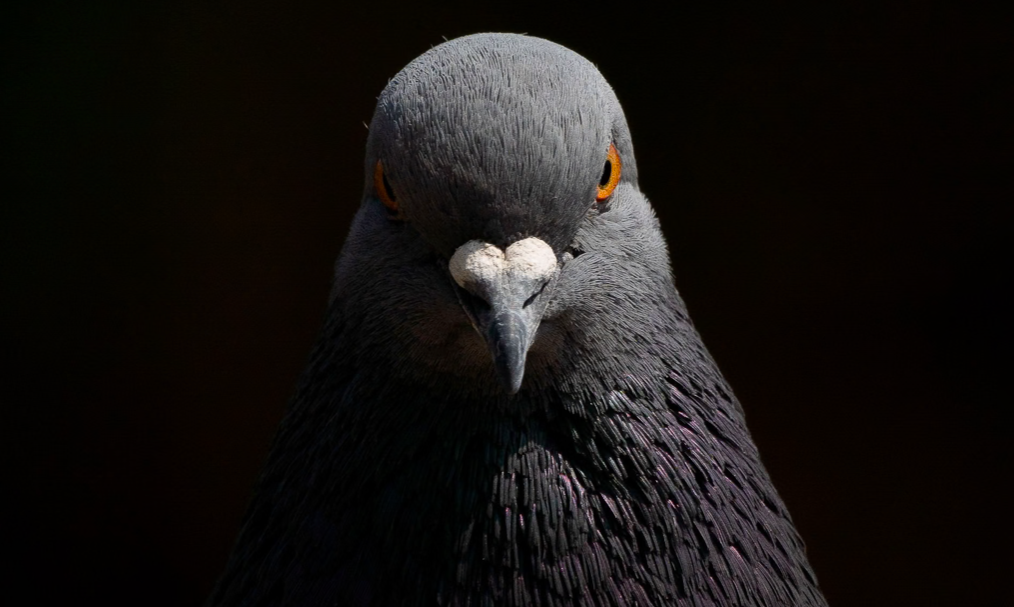By Abby West
Photo by Matias Basualdo
One of the first birds to be domesticated, pigeons and humans go way back, like 5,000 years back. As such, it’s next to impossible to tell where their native range was, according to the Cornell Lab of Ornithology. Nowadays you can find Rock Pigeons scavenging for leftover cheetos and trapezing on telephone wires all over the globe, including all over Central Texas, most notably in urban environments. In fact they’re by far my favorite bird to watch at stoplights, as they come in a vast array of colors and patterns, many of which are gorgeous and iridescent.
They have adapted so well to man-made environments in part due to their intelligence and innovation. Because they are so ubiquitous, Rock pigeons have been studied extensively, and according to David Sibley, “they have even been trained to distinguish impressionist art from other styles, and to read mammograms as well as a human can”. Also as published in The Guardian, recent studies have shown that pigeon’s problem solving style is similar to artificial intelligence. Using what neuroscience calls an ‘associative system’ in their brain, as AI does, they’ve a remarkable ability to learn from their mistakes, recognize patterns, and locate similarities between different objects. Maybe having a bird brain isn’t so bad.
But the coolest thing about these birds in my humble opinion, is their famous navigational abilities. They have been used to carry messages for humans for thousands of years, and much of what we know about bird navigation comes from research on pigeons. (Observing his captive pigeons helped Charles Darwin formulate some aspects of his theory of evolution!) Apparently, they have a kind of internal GPS. David Sibley, in his book What Its Like to Be a Bird, says it best: “pigeons can find their way back home from at least 2,500 miles away. How can they do what humans do, without a map and compass?… Pigeons sense the magnetic field, read the stars, track the sun, hear infrasound (very low frequency noises), follow smells, and more– all integrated with a precise clock. And once they have experience with a route, they can follow the same path using rivers, hills, roads, buildings and other landmarks.” On top of all that, their typical cruising speed is almost 50 mph!
With their ability to see the invisible (to us) and hear the inaudible (to us), it’s no wonder we’ve spent so much time and effort not only training them, but also learning from them.
Sources
Rock Pigeon, Cornell Lab of Ornithology’s All About Birds
Rock Pigeon, Texas Breeding Bird Atlas
Pigeons problem solve similarly to artificial intelligence, research shows The Guardian
What It’s Like to Be a Bird, David Allen Sibley




